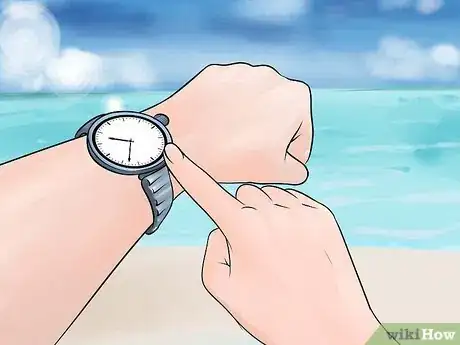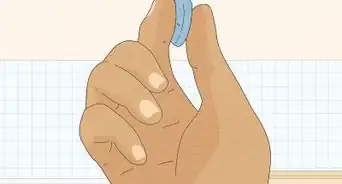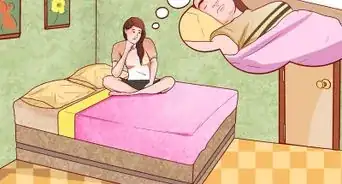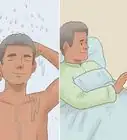wikiHow is a “wiki,” similar to Wikipedia, which means that many of our articles are co-written by multiple authors. To create this article, 24 people, some anonymous, worked to edit and improve it over time.
This article has been viewed 100,348 times.
Learn more...
The most crucial part of experiencing this profound state of mind is simply to learn how to relax or let go. This can be achieved by performing a progressive relaxation technique, which is when you gradually focus on tensing and relaxing all the parts of the body, from your toes to your head. Continue your practices throughout the day whenever you have spare time, and see how your ability to let go improves over time. Hypnagogia can only occur when you are deeply soothed, so you must learn to lose control so your body can show its more subtle side.[1]
This will hopefully facilitate access to the creative mind.
<be>
There are myriad bizarre phenomena that occur on the threshold of sleep or the transitional stage between wakefulness and sleep. Hypnagogia can range from incessant noises and vague geometrical patterns including a loud ringing sensation in the ears and voices to full-fledged scenes called dreamlets.[2] The difference between this imagery and dreams is that they are rather static and seem to lack a basic storyline. Many famous thinkers and artists have benefited from the great creativity offered through these separate realities and enjoyed passively observing their dreams forming right in front of their eyes.[3]
Steps
-
1Once you acquire the necessary aptitude for relaxing, the next step is to organize a proper time to practice your technique. The most effective method is to set your alarm to the early morning hours, staying up for at least thirty minutes to allow yourself to regain awareness. Engage in some sort of stimulating activity while building up your intention to observe the unconscious mind. If possible, generate a mantra that you will actively repeat to remind yourself of the important task at hand. Some people like to take caffeine before their attempt to improve their success rate even more, but this is not completely necessary. Another ideal time is during an afternoon nap, when the human brain is at its highest level of alertness with an increase in beta waves.
-
2Slowly begin to wind down, releasing all negative thoughts and worries. After reaching a state of reasonable serenity, there may be an increase in strange or intrusive thoughts that may distract you from your intention. The only way to prevent these abstract thoughts is by focusing on something to stay alert, thus bringing your consciousness into the sleep state. There are numerous ways to do this, but the most simple technique is to focus on your breath moving into and out of your body.
- While doing this, repeat your mantra in co-ordination to the breaths. In other words mentally recite 'One, I will stay alert. Two, I will stay alert' and continue to count your breaths while attentively focusing on your intention. Some people prefer to use visualization to induce the mysterious state faster, which involves engaging all of your senses in the scene.
- For instance, some people imagine climbing up stairs or driving a car, while really trying to experience it as if it's actually happening. This will also keep you aware and bring you closer to conscious sleep. Another way to reach the hypnagogic state is to distract your mind by thinking about things until you are about to fall asleep.
Advertisement -
3Watch for any signs of bright colours or patterns emerging in front of your eyes. Do not try to control these shapes, just observe quietly and keep your mind on your intention to stay aware. Keep in mind that the imagery is hypnotic and can rapidly cause you to lose awareness. Watch it indirectly to prevent this from happening. Eventually, as the state deepens you will begin to hear voices or see scenes.
- Hypnagogia can include all of your five senses, even your sense of taste and smell. Sometimes, music or poetry will be heard, but the context in this state often uses various forms of wordplay. Scenes will often blend into each other or simply float around, and can be either extremely lifelike or rather vague. Just enjoy the ride, and when you wake up, immediately record any prior experiences. This will help you develop new creative insight or ideas.
-
4Try sipping on green tea. It relaxes the mind and the body. It also calms the body and can help you fall asleep faster and have a restful night.[4]
Warnings
- Some people can find this state rather scary, especially if you are experiencing it for the first time. Remember that there is nothing dangerous about this technique. You may experience hypnotic jerks or the uncomfortable sensation of descending down a tunnel.⧼thumbs_response⧽
- When deeply fatigued, you may experience very vivid and terrifying hallucinations accompanied by the sensation of sleep paralysis. Once again, there is nothing to worry about if this happens. Note that you may freely exit this state by waking yourself up, or if the sensations become too unbearable.⧼thumbs_response⧽






























































Medical Disclaimer
The content of this article is not intended to be a substitute for professional medical advice, examination, diagnosis, or treatment. You should always contact your doctor or other qualified healthcare professional before starting, changing, or stopping any kind of health treatment.
Read More...